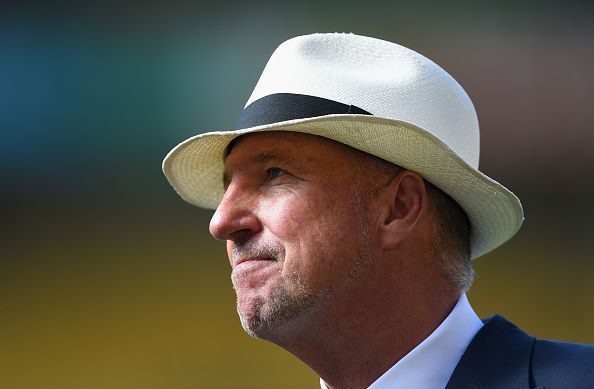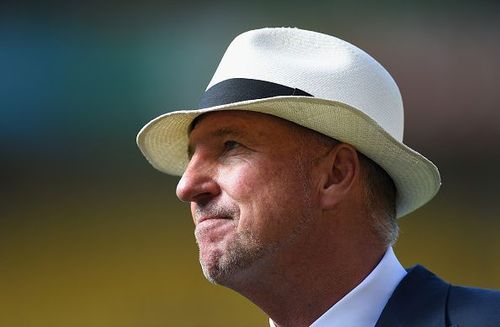
Cricket World Cup history: Ian Botham, a larger than life figure

Big Boy Botham had the Midas touch. He was not the world's best bowler, but had the knack of picking up wickets. He was a big-hitting batsman who could pulverize the best of bowlers, often when the chips were down. And he was a fine fielder, particularly close to the wicket. The sum total was one of the greatest all-rounders ever seen in the game.
Like Garfield Sobers, and unlike Imran Khan, Botham did not make an outstanding captain, but whatever he did on the field was electric. He was always involved in the game, a sure sign that he was good enough to walk into a team both as a batsman or a bowler. But alas, the World Cup did not see the best of Ian Botham.
Controversy chased him as it often does a man of action. A burly character with boundless energy, he would sometimes be a bull-in-a-china-shop. But his commitment to the sport was total and he left a lasting impression.
Fittingly, Lord's marked his World Cup debut in 1979 against the Old Enemy, Australia, who were so many times victim to his stirring deeds. Those were the Packer years when most of the Aussie stalwarts had crossed over to the rebel circus of the media tycoon.
It was, then, an unequal fight against a below-par Australian team. And so it turned out in this opening game, but Botham had little to show except bring up the winning runs for his side.
Match No. 2 against Canada was little more than a limb-loosener and was over in just three-and-a-half hours, with a total of 91 runs scored. There was no scope again for the Botham action.
The game against Pakistan was a closely-contested encounter. Botham chipped in with a useful 22, took a fine catch off Mike Hendrick to dismiss Majid Khan, and captured the wickets of Zaheer Abbas and Javed Miandad in his stint of 12 overs in which he conceded 38 runs. Not much more could be expected in a low-scoring match such as this.
The semi-final was an even tighter match. After four wickets had gone for 98, Botham helped Graham Gooch put on 47 runs. He then rattled the timber behind Richard Hadlee to end a potentially dangerous partnership with Glenn Turner. England snatched a win by 9 runs.
In the final, the defending champions West Indies outplayed England, and Botham's role was confined to snapping up the last two wickets to fall. Overall it was not a tournament in which Botham was the dominant force that he otherwise was.
The trend continued in the first match of the 1983 tournament against New Zealand. Botham scored 22 off 16 balls with a hit over the ropes, held a catch and took two wickets, and England won easily. Glory went to others.
The second game was worse. Botham was run out for a duck and was hit for 60 runs in his 12 overs by the Sri Lankans. The rest of the tournament was equally undistinguished, barring a fine bowling stint of two for 12 off 9 overs that helped demolish Sri Lanka in the return encounter.
Clearly the Botham magic was missing in the world's top one-day contest. In 12 matches in his two World Cups Botham scored a total of 105 runs with a highest score of 22 and an average of 15, and took 14 wickets at an average of 32.57 with a best of two for 12. These were hardly Botham-esque figures.
He did not turn up for the 1987 event in India and Pakistan. He returned in 1992, determined to set the record right. He did so partly, but mainly through his bowling as he emerged as the second-highest wicket-taker with 16 scalps at 19.12.
Had it not been for this, Botham would not have figured in the list of top performers in the World Cup, like some other stalwarts such as Dennis Lillee, Jeff Thomson, Sunil Gavaskar, Allan Border and Malcolm Marshall.
Botham was now opening the batting with Graham Gooch. He had one outstanding match, predictably against Australia at Sydney, when his real self came to the fore. When he arrived for the tournament he declared in characteristically tongue-in-cheek fashion: "Wouldn't it be marvelous to carry the Cup round the Melbourne Cricket Ground watched by 100,000 convicts."
That Botham was determined to make his presence felt in his last World Cup became apparent in the first match. He dismissed Sachin Tendulkar and Vinod Kambli during his stint of two for 27 in 10 overs in the narrow win over India, and bagged his first man-of-the-match award in the world's biggest one-day competition.
He continued to bowl well. As the ball darted around at the Adelaide Oval, Botham joined the other seamers in handing a torrid time to the Pakistani batsmen. He took two for 12 off 10 overs as Pakistan slid to 74 all out.
Then came the match with Ashes rivals Australia. Whether it was the realization that he had hardly done justice in the World Cup to his massive reputation, or whether the sight of the Aussies got the adrenaline pumping, this was the only match that saw the real larger-than-life Botham.
He reminded the world of his ability to create a sensation as he captured four wickets in seven balls, three of them in one over, to trigger a collapse.
He went through the defenses of skipper Allan Border, and had Ian Healy caught by Neil Fairbrother. He dismissed Peter Taylor and Craig McDermott for ducks. From 145 for four, Australia collapsed to 155 for eight and finally folded for 171.
Botham took 4 for 31 off his 10 overs. He then put on 107 for the first wicket with Gooch, hitting 53 off 77 balls with six boundaries.
These were his best bowling figures as well as highest score in 22 appearances in the tournament. England romped home by eight wickets. This was one man-of-the-match performance that Botham would have cherished dearly.
Botham then scored 47 off the Sri Lankan bowling, smashing 5 fours and 2 sixes in 63 balls in the next game at Ballarat. And as the English renewed their rivalry with the South Africans, he figured in an opening stand of 63 with Alec Stewart.
In one final hurrah he bagged three for 23 even as England suffered a reverse at the hands of Zimbabwe at Albury in the last round-robin match.
Botham took a backseat as England pipped South Africa in the semi-final, and then saw Pakistan drive away with the title. But he finally had a World Cup in which he redeemed somewhat his huge standing in the game - for one last time.
Peter Roebuck had the final word: "….. we've seen Beefy Botham, pantomime artiste, defend staunchly and bowl niggardly medium-pacers, for all the world as he were leading a life of an evening pipe and slippers."
Botham was at that point the second-highest wicket-taker in the World Cup with 30 wickets, four less than Imran Khan and two more than Kapil Dev. It was with the bat that he did not do full justice to his talents in the showpiece event. Just one fifty in 18 innings, and an average of 18.56, are not figures that he would be proud of.
That was an aberration that does not obscure the fact that Botham was a giant who could turn a match around with the bat or ball in next to no time. In that sense he was much like the great Australian all-rounder Keith Miller, an imposing figure who could hardly be away from the spotlight.
Ian Botham’s World Cup record:
Matches 22, Highest Score 53, Runs 297, Average 18.56, Strike-rate 62.39, Fifty 1, Catches 10
Wickets 30, Average 25.40, Best 4/31, Economy 3.43
Also read – Cricket World cup hat trick
Follow Sportskeeda for all the updates on World cup points table, news, live scores, most wickets in world cup, schedule, most runs, and fantasy tips.